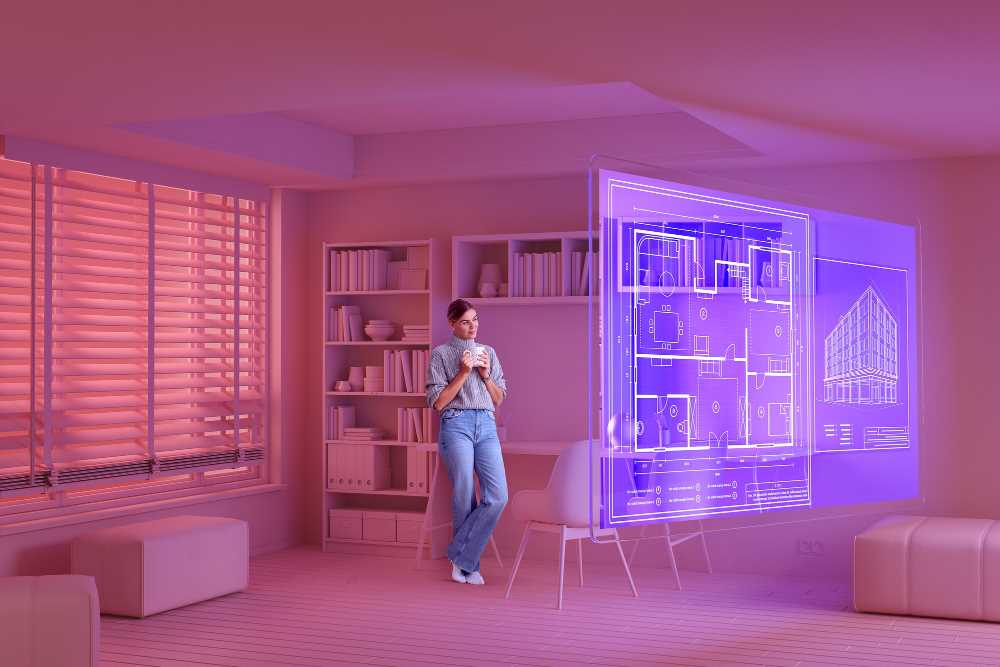The fast-innovating and transforming world of interior design is well-embracing digital technology, and artificial intelligence (AI) is altering the current landscape and experience. Relying solely on pen and paper has become passé. In this digital age, designers are unlocking the potential of digital tools to optimize processes, boost ingenuity, and create immersive experiences.
From virtual reality (VR) to AI-powered design assistants, the digital revolution enables designers to push boundaries and deliver remarkable spaces.
Also looking at numbers, the AR market touched the $10.7 billion mark in 2019 and is anticipated to grow up to $72.7 billion by 2024, exhibiting a CAGR of 46.6%. Interior design is one of the most prevalent applications of VR and AI technology, as it can help with cost savings and save time in creating designs.
Let us look at some fascinating examples of how digital technology and AI revolutionize interior design, altering how we conceptualize, envisage, and bring concepts to life.
Visualisation and Conceptualisation
Digital tools have brought a paradigm shift in interior design’s visualization and conceptualization stages. With advanced software and applications, designers can now create photo-realistic representations, virtual walkthroughs, and 3D models that allow clients to experience the proposed designs before construction begins. VR technology opens doors to new potential, empowering clients to explore and interact with spaces virtually.
For example, Roomle, an AI-powered interior design platform, allows users to design and furnish their spaces using a vast database of furniture and decor items. Through AR and VR, users can envision the designed space, test different designs, and procure products directly within the app.
Well-organized Design Process
Digital technology has notably modernized design development, eradicating much of the labor-intensive work and saving valuable time. Popular design software such as AutoCAD and SketchUp facilitates designers’ swift creation of accurate floor plans, elevations, and 3D models. These tools not only augment accuracy but also ease quick iterations and alterations.
Furthermore, AI-driven tools can automate time taking and routine tasks, allowing designers to focus on their creative aspect instead. Platforms such as Morpholio Board and Curate by Sotheby’s International Realty for instance use AI algorithms to curate furniture and decor recommendations tailored to the client’s style preferences and spatial constrictions. This automated assistance fast-tracks the selection procedure, offering designers an assortment of options crafted to their client’s preferences.
Bespoke Design Experiences
Digital technology allows designers to offer tailored design experiences that match distinct tastes and preferences. AI algorithms possess the ability to explore vast amounts of data, including past design projects and client responses, to cherry-pick patterns and preferences. This data-driven approach helps designers create spaces that are in sync with their clients’ exclusive tastes and lifestyles.
Additionally, AI-powered chatbots and virtual design assistants offer clients on-demand design guidance and help. These digital companions can help answer questions, propose design suggestions, and offer real-time guidance. The virtual design assistant named “Minnie” by Homepolish for example interacts with clients to comprehend their design needs, proposes tailored options, and offers professional advice, revolutionising the way design consultations are performed.
Conclusion
A new era of possibilities in interior design has been unlocked thanks to the digital revolution. From empowering realistic visualizations to restructuring the design process and offering bespoke experiences, digital technology, and AI are reshaping how designers create and remodel spaces.
As the sector embraces these advancements, we can expect even more innovative tools and applications that will further push the boundaries of creativity and collaboration. Acceptance of the digital revolution facilitates interior designers’ ability to benefit from technology to their advantage and offer awe-inspiring spaces that echo their clients’ vision.




